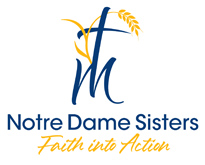Sr. Joan Polak: Building Communities in Chile and Honduras
by Mikaela VanMoorleghem
In a revealing interview with Sr. Joan Polak, we examine her remarkable journey of community building and service in Latin America, particularly in Chile and Honduras. Sr. Joan, Notre Dame Sr., shares her experiences of working tirelessly to establish vibrant parishes and empower communities through education and skill-building initiatives.
Sr. Joan reminisced about her initial call to serve in Latin America. Having never been out of the country, Sr. Joan departed August 26, 1963, for Ponce University in Puerto Rico for a four-month intensive course in Spanish and missiology. She did not know any Spanish, but quickly learned and became head of the class in a short time! Sr. Joan said, “I think I learned Spanish so quickly because I have a Czech background and understand Czech.”
She left Puerto Rico on December 17, 1963, and arrived in Lima, Peru where they spent several days as the home for them in Chile was not ready. On December 27, they continued to Santiago, Chile.
Her first task was to help organize a new parish in Chile. In order to do this, Sr. Joan had to take census of Catholic’s in the area to establish the parish boundaries. Sr. Joan said, “We used to walk from house to house every day, on foot, and upon returning home, we would create maps of the area and label each house with the residents’ names.” Sr. Joan recalls the warm reception they received from the people, who welcomed them with open arms. “The people accepted us, and many people invited us into their homes for meals or brought us lunch during our visits,” said Sr. Joan.
In Chile, Sr. Joan’s primary focus at first was on education, particularly for young adults. Sr. Joan was used to working with first and second grade students, so she was a little nervous about working with teenagers, but quickly adapted. Sr. Joan mentioned, “In Latin America at that time, men worked with men, and women worked with women, so I mostly worked with teenage girls.”
She eventually worked with adult women teaching them valuable skills such as crafting, sewing, and cooking. Sr. Joan said, “I taught them how to make pie. It was the first pie they ever tasted, but we had to use a cake pan because they didn’t have a pie pan.”
Through these initiatives, Sr. Joan not only imparted practical knowledge but also fostered a sense of empowerment and community among the participants. Sr. Joan commented, “We taught each other. I learned how to make rugs! As far as I know, the women’s group is still functioning.”
Sr. Joan continues, “At the end of the year, we held an exposition showcasing all of their accomplishments. The government officials were highly impressed by the women’s initiatives and showed great enthusiasm, with many coming from the capitol to witness our efforts.”
Reflecting on her time in Chile, Sr. Joan recalls the political and social changes that were taking place in the 1960s. While she did not experience significant challenges due to these changes, she was aware of the shifting dynamics within the country.
After four impactful years in Chile, Sr. Joan returned to the United States before feeling called to continue her mission in Latin America. While in the United States, Sr. Joan applied for a position as a social worker at the Nebraska Department of Social Services (NDSS) and worked as a social worker for 17 years. When she retired, she asked the Notre Dame Community if she could go back to Latin America.
This time, she found herself in Sulaco, Honduras. Sr. Joan took on the role of overseeing a sewing school. “It was hard for me to teach sewing because the women didn’t use pre-made patterns. Instead, they consulted a pattern book, selected their desired design, took measurements, drew the pattern on old newspapers, and then proceeded to sew the pieces together,” said Sr. Joan.
Sr. Joan also worked as a translator for one of the doctors in Sulaco. “I enjoyed visiting the Sokoi Indian people in the mountains, but it was quite difficult to translate for them because I didn’t always understand their dialect myself. The Indian people were true native entrepreneurs, and we visited them several times due to the doctors recognizing a significant need. Medical teams were always involved in the visits. We cared for malnourished children, keeping them until they were well enough to return home.”
The majority of people Sr. Joan worked with were very poor, struggling to put food on the table. Proper medical care was limited, with one doctor serving multiple villages. Some children had to walk long distances to school, facing dangers along the way. Despite living in town, safety was not always guaranteed.
As Sr. Joan reflects on lessons learned, she said, “One enduring lesson that I continually reflect on is the presence of poverty wherever you go. Regardless of the location, there will always be individuals facing economic challenges. The nature of poverty may vary between states, Chile, and Honduras, but its existence is constant. Another important realization is that every nationality possesses both strengths and weaknesses. Focusing on the strengths and working with them while disregarding the weaknesses is crucial.”
As Sr. Joan reflects on her experiences, she emphasizes the importance of humility, adaptability, and genuine care for others. Her journey personifies the transformative power of service and solidarity, transcending borders and cultures to create positive change in the world. Sr. Joan’s legacy continues to inspire countless individuals to embrace compassion and service in their own lives.
